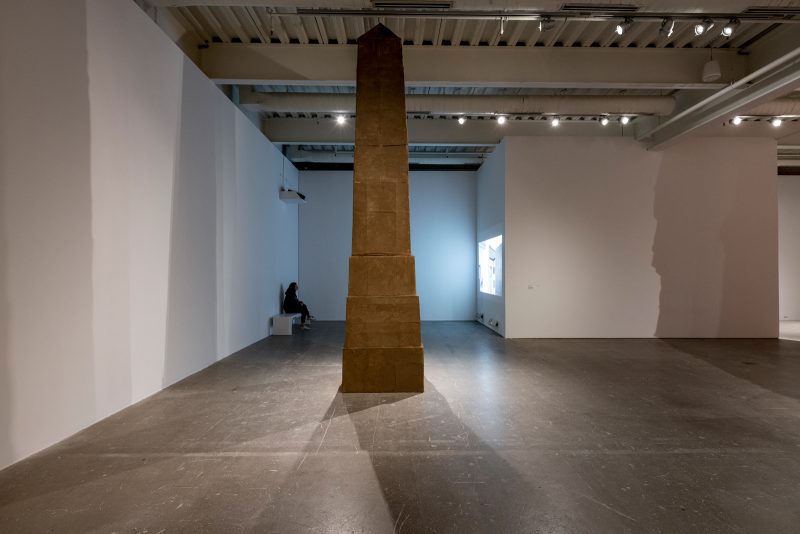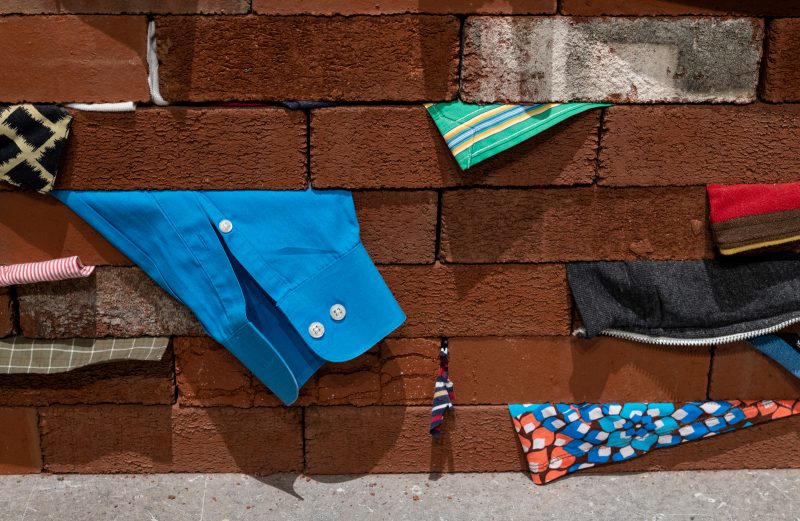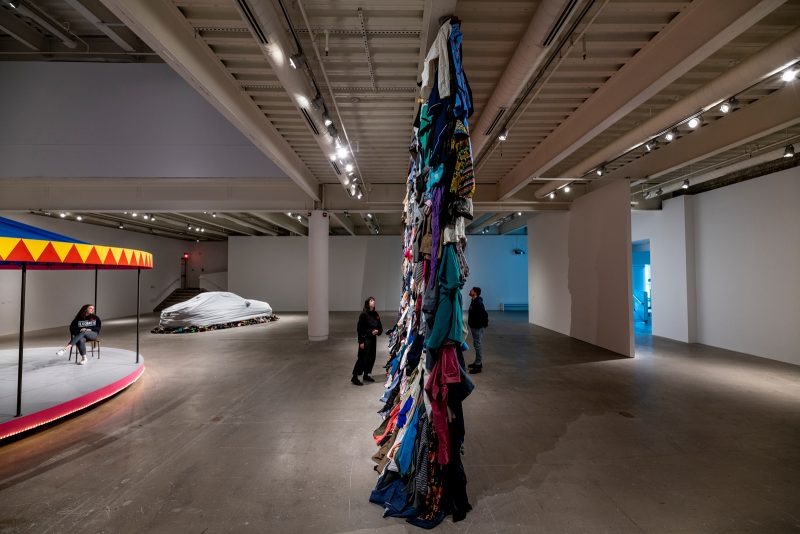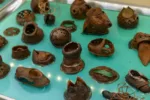[ED. Note Due to COVID-19, The Institute of Contemporary Art is closed until further notice.]
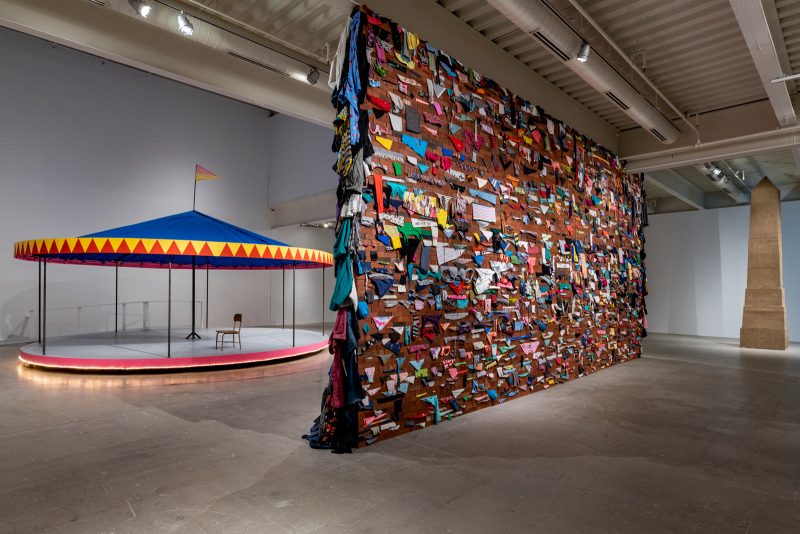
Karyn Olivier is an artist creating structures with a lasting impact, building columnar sculptures, sometimes of stunning beauty, and other times of a washed out simplicity that can still inspire. Her pieces invite viewers to think about the politics of construction, the history of not just specific buildings, but building itself. In Everything That’s Alive Moves, a set of pieces currently displaying at ICA Philadelphia, we witness more than a series of painstakingly imagined monuments–the pieces in this show radiate with vitality despite their austere, often distancing construction. While it’s often difficult to garner warmth in minimalist settings–particularly within the ICA Philadelphia that takes great strides to present a modern, clean atmosphere with little accoutrements–Olivier’s attempts to ground the space in a soulful confluence of ideas is admirable.
Upon entering the space, onlookers are given carnations to symbolize a reverence for Mother’s Day, an event celebrated on the second Sunday of May; a placard at the entrance of Everything That’s Alive Moves reminds us that the anarcho-future primitivist Black activist MOVE were served warrants on this same day–warrants that would lead to the bombing of an entire neighborhood after a violent stand-off. This political immersion is the context that Olivier’s art wishes to be engaged. Three steps later, viewers face a giant brick wall entitled “Fortify” that looms ominously. The wall is an absolute monolith, rendered with bits of discarded clothing stuck in the masonry. The piece generously uses heavy allegory, presenting itself as a lens for empathetically viewing discarded human lives, particularly of the poor whose stories are represented by the bits of colorful, cheap fabric, and, despite gentrifying movements towards displacement, they remain, ever embedded, even if they do remain merely symbolically or in fragments, dreamlike. While it may seem garish by its looks, the message is clear. On the other side of the wall, however, are whole garments scaling the immensity of the work; it’s as if an H&M exploded onto it. The political messaging seems lost, except to say that people aren’t fragments, we are all whole and together a community.
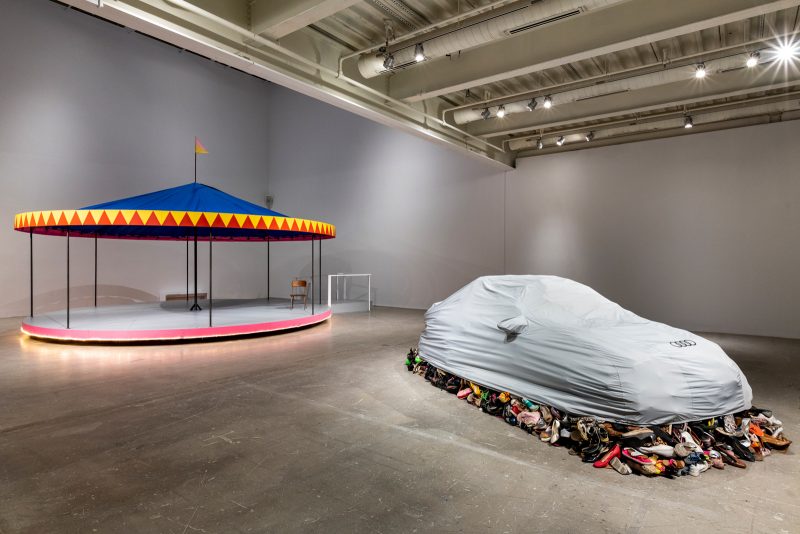
“Car Cover” is a striking companion piece to “Fortify.” It’s a car or car-shaped piece covered in a drab, graying tarp, while underneath it bursts with footwear discarded similarly to the clothing enmeshed in “Fortify”. There’s a sense of banal urbanity in the piece. It’s meant to resurrect questions of privilege and modernity, where the tarp used to cover an expensive vehicle now covers worn, inexpensive shoes, bringing to light the commodification of preciousness and need. It can be imagined that the shoes carried folks to work, walked children to school, saved their former wearers from danger on rough streets.
Often, the works in Everything aren’t particularly aesthetically pleasing; they’re rough, intentional monuments to everyday life. Despite the immensity of the sculptures presented, including that of a slow moving carousel adorned with a single, impossibly small chair for viewers to ride and interact with, the most fascinating presentation in Everything is “Moving the Obelisk”, a short film that documents the building, deconstructing, moving, and reassembling of one of her pieces while Olivier narrates both anecdotal and historical passages about monument building. From the film: “A form recreated from ancient Black culture, re-situated in Philadelphia, a Black city. And now, at least temporarily, this fragile obelisk sits in close proximity to its king, the Sphinx of Ramses II*, the largest in the western hemisphere. It is wildly displaced, a stranger in a strange land.” A moving parallel is made in the film to the relocation of this modern art piece and the hands, machines and labor that went into its relocation, and the creation of structures like the pyramids that used slave labor, as well as the waters that carried enslaved Africans to the Americas. “The past is only the past because there is a present,” Olivier remarks in the film. It’s a statement that echoes throughout Everything That’s Alive Moves a show that attempts to both demystify object worship and empathize with the stories of the objects themselves.
*The Sphinx of Ramses II is part of the collection housed in the galleries at the University of Pennsylvania Museum of Archaeology and Anthropology, also known as the Penn Museum.
“Karyn Olivier: Everything That’s Alive Moves,” through May 10, 2020. Institute of Contemporary Art, University of Pennsylvania, Philadelphia, 19104
[ED. Note Due to COVID-19, The Institute of Contemporary Art is closed until further notice.]
More Photos
